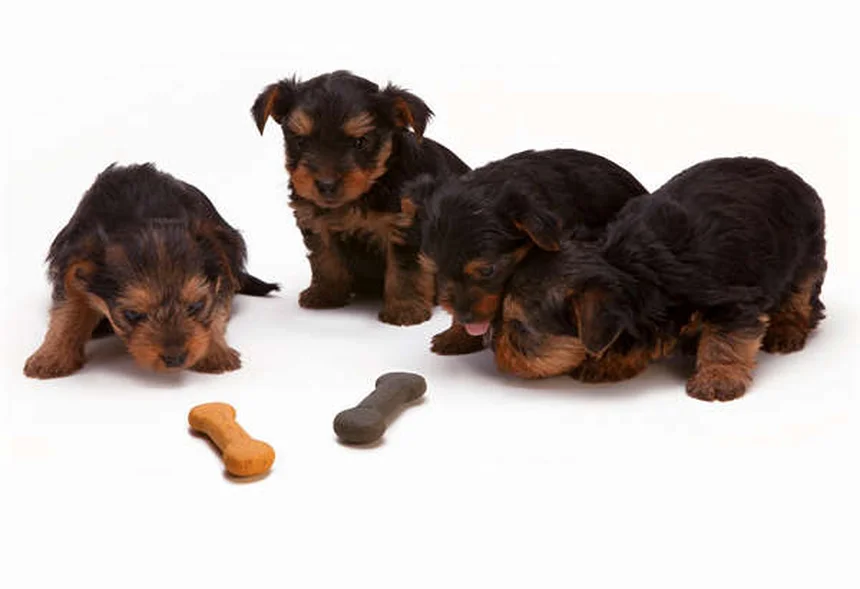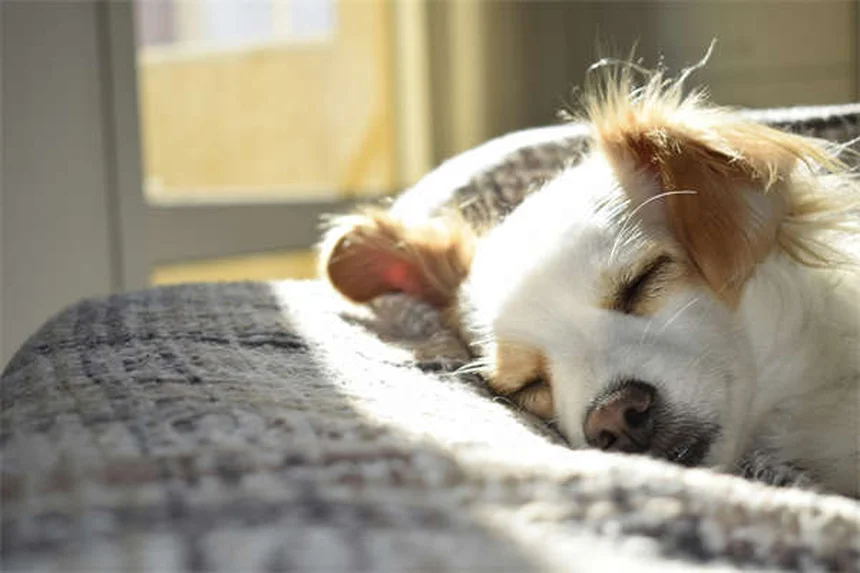What is mastitis in chinchillas? The answer is: It's a painful mammary gland infection that nursing female chinchillas can develop, usually from tiny injuries caused by their kits' sharp teeth. I've seen too many cases where owners didn't recognize the symptoms until it became serious - that's why you need to know this stuff.When your chinchilla has mastitis, you'll notice thick, bloody milk and obvious discomfort during nursing. The glands often feel warm and swollen to the touch. Here's the deal - this isn't something that'll just go away on its own. Without proper treatment from an exotic vet, it can permanently damage your pet's ability to nurse future litters.The good news? When caught early, mastitis is very treatable with antibiotics and proper wound care. In this guide, we'll walk through exactly what to look for and how to help your furry friend recover quickly. Because let's be real - no one wants to see their chinchilla in pain, especially when there are simple steps to prevent this whole situation.
E.g. :5 Warning Signs of Digestive Disorders in Fish You Can't Ignore
- 1、Understanding Mastitis in Chinchillas
- 2、Why Does Mastitis Happen?
- 3、Getting the Right Diagnosis
- 4、Effective Treatment Approaches
- 5、Managing Life During Recovery
- 6、Preventing Future Cases
- 7、When to Seek Immediate Help
- 8、Beyond the Basics: Additional Mastitis Insights
- 9、The Bigger Picture: Chinchilla Reproductive Health
- 10、Alternative Therapies Worth Considering
- 11、Community Support for Chinchilla Owners
- 12、Long-Term Health Monitoring
- 13、FAQs
Understanding Mastitis in Chinchillas
What Exactly Is Mastitis?
Picture this: your fluffy female chinchilla suddenly seems uncomfortable while nursing her kits. That could be mastitis – a fancy word for inflamed mammary glands. It's like when you get a swollen ankle after twisting it, but in this case, it's happening to your chinchilla's milk-producing areas.
Now, here's the deal – mastitis often starts when those adorable but sharp-toothed kits accidentally injure mom during feeding. These tiny nicks become gateways for bacteria, turning a simple scratch into a full-blown infection. Left untreated, this can permanently damage the mammary tissue, which is why quick action is crucial. I've seen cases where early treatment made all the difference between a full recovery and long-term complications.
Spotting the Warning Signs
Physical Changes You Can't Miss
Your chinchilla's body will give you clear signals if mastitis develops:
- Warm to the touch mammary glands (like a mild fever in that area)
- Noticeable swelling that makes the glands look enlarged
- Weird milk consistency – think thick, possibly with blood streaks
Ever seen spoiled milk? That's kind of what happens here, but more serious. The milk might change color or develop a strange texture, making it obvious something's wrong.
Behavioral Red Flags
Watch for these telltale signs in your chinchilla's behavior:
| Normal Behavior | Mastitis Behavior |
|---|---|
| Comfortable nursing sessions | Obvious pain during feeding |
| Regular milk production | Suddenly decreased output |
| Active between feedings | General discomfort even when not nursing |
You know your pet best – if she's acting off, trust your gut. That discomfort you're noticing? It's her way of saying "Hey, I need help here!"
Why Does Mastitis Happen?
 Photos provided by pixabay
Photos provided by pixabay
The Main Culprit: Those Sharp Little Teeth
Let's be real – baby chinchillas aren't exactly gentle eaters. Their teeth are like tiny needles, and during enthusiastic feeding, they can accidentally puncture or scratch the mammary tissue. Most minor injuries heal fine, but sometimes bacteria sneak in through these openings.
Think of it like this: when you get a paper cut, you barely notice it. But if you don't clean it, it might get infected. Same principle applies to your chinchilla's nursing wounds, just in a more sensitive area.
Other Potential Causes
While nursing injuries are the usual suspects, other factors can contribute:
- Poor cage hygiene creating bacterial breeding grounds
- Weakened immune system from stress or other illnesses
- Blocked milk ducts leading to backup and infection
Here's a question you might be wondering: "Can mastitis happen without visible injuries?" Absolutely! Sometimes the damage is microscopic, or the infection comes from internal factors rather than external wounds.
Getting the Right Diagnosis
What Your Vet Will Look For
When you bring your chinchilla in, the vet will play detective. They'll:
- Ask about recent behavior changes (your observations are crucial!)
- Physically examine the mammary glands
- Possibly run blood tests to identify the specific bacteria
The more details you can provide about when symptoms started and how they've progressed, the better. It's like giving the vet pieces to complete the puzzle.
 Photos provided by pixabay
Photos provided by pixabay
The Main Culprit: Those Sharp Little Teeth
You might think: "Can't we just treat it without all these tests?" Here's the thing – different bacteria respond to different antibiotics. Identifying the exact culprit means your vet can prescribe the most effective treatment, avoiding the guesswork that could prolong your pet's discomfort.
Effective Treatment Approaches
Medical Interventions That Work
The treatment plan typically involves:
- Antibiotics to knock out the infection
- Anti-inflammatory meds to reduce swelling and pain
- Topical treatments for any visible wounds
Imagine giving your chinchilla a complete care package – attacking the infection from multiple angles for the best results. The exact medications will depend on what the vet finds during examination.
Home Care Essentials
While the vet handles the heavy lifting, you've got important homework:
- Keep the living area spotless to prevent reinfection
- Administer medications exactly as prescribed
- Monitor the healing progress daily
Consistency is key here. Setting phone reminders for medication times can be a lifesaver – trust me, I've been there!
Managing Life During Recovery
 Photos provided by pixabay
Photos provided by pixabay
The Main Culprit: Those Sharp Little Teeth
Here's the tough part – the babies still need to eat, but mom needs a break. You've got options:
- Find a foster chinchilla mom if possible
- Hand-feed with appropriate formula
- Temporarily separate the kits to allow healing
It's not ideal, but sometimes necessary. The silver lining? Hand-feeding can create an incredible bond between you and the babies.
Monitoring Progress
Recovery isn't instant – it's a process. Keep an eye on:
- Mammary gland appearance (swelling should gradually decrease)
- Mom's comfort level (she should seem less distressed)
- Any changes in milk if she resumes nursing
Healing takes time, but you should see steady improvement. If not, that's your cue to check back with the vet.
Preventing Future Cases
Regular Check-Ups Are Key
Make mammary gland inspections part of your routine:
- Gently examine the area daily during nursing periods
- Look for any redness, swelling, or sensitivity
- Watch the kits' feeding behavior for roughness
An ounce of prevention is worth a pound of cure, as they say. Catching potential issues early can save everyone a lot of trouble.
Creating a Safe Environment
Simple adjustments can make a big difference:
- Keep nails trimmed on both mom and kits
- Ensure the nesting area is clean and soft
- Provide stress-free surroundings
Remember, happy chinchillas are healthy chinchillas. A calm environment supports their natural healing abilities.
When to Seek Immediate Help
Emergency Signs
Don't wait if you notice:
- Severe swelling or discoloration
- Complete refusal to eat or drink
- Lethargy or other concerning behavior changes
These could indicate the infection is worsening or spreading. When in doubt, it's always better to err on the side of caution with your furry friend.
Building a Relationship With Your Vet
Find an exotic pet specialist you trust before emergencies happen. That way, when you need help, you're not scrambling to find someone who understands chinchillas.
Pro tip: Keep your vet's after-hours contact info handy. Mastitis doesn't always happen during office hours, and quick access to professional advice can be priceless.
Beyond the Basics: Additional Mastitis Insights
The Emotional Toll on Nursing Mothers
We often focus on the physical symptoms, but have you considered how mastitis affects your chinchilla emotionally? Nursing mothers already experience hormonal changes, and adding pain to the mix creates significant stress. You might notice your usually social pet becoming withdrawn or irritable - that's her way of coping with discomfort.
Here's something fascinating I've observed: chinchilla moms with mastitis sometimes develop unusual nurturing behaviors. Some become overprotective, while others might temporarily reject their kits. This isn't bad parenting - it's instinct telling her to protect both herself and her babies from further harm. Creating a quiet recovery space with minimal disturbances can help her regain emotional balance.
Nutrition's Role in Prevention and Recovery
What goes into your chinchilla's bowl matters more than you might think when preventing mastitis. A diet rich in vitamin C and antioxidants strengthens tissue integrity, making those mammary glands more resilient. I recommend adding rose hips or small amounts of bell pepper to their regular hay and pellets - these natural sources pack a nutritional punch.
During recovery, hydration becomes crucial. Try this trick: soak their pellets slightly to increase fluid intake. But here's the catch - you must remove uneaten moistened food within two hours to prevent spoilage. It's a balancing act, but worth it when you see how proper nutrition speeds healing.
The Bigger Picture: Chinchilla Reproductive Health
Breeding Considerations for Healthy Mothers
If you're planning chinchilla breeding, timing matters more than most people realize. First-time mothers under eight months old have higher mastitis risks because their bodies aren't fully developed. Similarly, back-to-back pregnancies without recovery periods tax the system. Responsible breeders typically wait at least three months between litters.
Let me share an eye-opening comparison:
| Breeding Practice | Mastitis Risk Level |
|---|---|
| First pregnancy after 12 months | Low (15-20%) |
| Pregnancies spaced 4+ months apart | Moderate (25-30%) |
| Back-to-back pregnancies | High (50-60%) |
See how those numbers jump? That's why understanding reproductive cycles matters just as much as treating the condition itself.
When to Consider Spaying
For chinchillas with recurrent mastitis, spaying might be the kindest option. The surgery removes the mammary tissue completely, eliminating future infection risks. But is this major procedure safe for small pets? Modern veterinary techniques have made it much safer than a decade ago, with success rates above 90% in experienced hands.
The recovery period requires special care - think soft bedding, easy-to-reach food, and no dust baths for two weeks. I've helped several owners through this process, and while it seems daunting initially, the long-term health benefits often outweigh the temporary challenges.
Alternative Therapies Worth Considering
Cold Compress Techniques
While waiting for vet-prescribed medications to work, gentle cold therapy can provide relief. Here's how to do it safely: wrap an ice cube in a thin cloth and lightly hold it against the affected area for no more than 30 seconds at a time. Repeat every few hours. This reduces inflammation without shocking their sensitive systems.
Warning: never apply ice directly to skin! Chinchillas have delicate circulatory systems. One owner creatively used chilled ceramic tiles from the pet store - her chinchilla would lie on them voluntarily when needing comfort. Now that's a clever solution!
Herbal Support Options
Certain herbs can complement traditional treatment when used cautiously. Chamomile tea (cooled and diluted) makes a gentle cleansing rinse. But here's a critical question: "Are all herbs safe for chinchillas?" Absolutely not! Many common human remedies like peppermint or tea tree oil are toxic to small pets. Always consult your vet before trying anything new.
For those interested in natural approaches, I've had success with aloe vera gel (100% pure, no additives) on minor external sores. The trick is applying a rice-sized amount and preventing ingestion during grooming. It's about finding that sweet spot between traditional and alternative care.
Community Support for Chinchilla Owners
Learning From Others' Experiences
When I faced my first mastitis case, online chinchilla forums saved my sanity. Real owners share practical tips you won't find in textbooks, like using baby socks as temporary "bras" to protect sore areas (just supervise closely!). These communities also help you gauge what's normal during recovery versus when to panic.
But beware - not all advice is equal. I once saw someone recommend garlic for mastitis (big no-no for chinchillas!). That's why vet verification remains essential, even when following crowd-sourced suggestions. Think of it as gathering ideas to discuss with your professional, not replacing their expertise.
Finding Local Resources
Your area might have surprising support options. Some cities have exotic pet clubs with shared medical equipment like small-scale heating pads. I recently discovered a "chinchilla grandma" program where experienced owners temporarily foster kits during mom's recovery. How cool is that?
Here's a pro tip: check university veterinary schools. Many offer discounted services through their teaching programs, with specialists-in-training supervised by seasoned professors. It's a win-win - you get affordable care while helping train the next generation of exotic animal vets.
Long-Term Health Monitoring
Scar Tissue Management
After severe mastitis cases, scar tissue can affect future nursing ability. Regular gentle massage (once fully healed) helps maintain tissue flexibility. Use your pinky finger to make tiny circular motions - imagine you're kneading microscopic dough! Start with just 10 seconds daily, gradually increasing as tolerated.
Watch for these positive signs: the area feels softer over time, and your chinchilla doesn't tense up during touch. If she seems uncomfortable, stop immediately and try again later. Patience pays off with these delicate creatures.
Weight and Activity Tracking
Post-recovery, keep a simple log tracking three things: weight weekly, appetite changes, and activity levels. Sudden drops might signal recurring issues. I recommend small kitchen scales - weigh your chinchilla in a carrier (then subtract the carrier weight) for minimal stress.
Notice she's less active after recovery? That might not be mastitis-related. Could her cage setup need refreshing? Sometimes adding new ledges or chew toys sparks renewed energy. Recovery isn't just about physical healing - it's about restoring their zest for life too!
E.g. :Inflammation of the Mammary Gland in Chinchillas | PetMD
FAQs
Q: How can I tell if my chinchilla has mastitis?
A: Look for these 5 clear signs: 1) Warm, swollen mammary glands that feel hotter than the surrounding skin 2) Milk that's thickened or has blood in it 3) Your chinchilla showing pain when nursing or even when touched near the glands 4) Decreased milk production 5) General signs of discomfort like restlessness or lethargy. I always tell owners - if your normally active chinchilla starts acting differently around feeding time, don't ignore it. Those sharp kit teeth can create tiny wounds you might not even see, but the behavior changes will tip you off.
Q: Can mastitis kill my chinchilla?
A: While death from mastitis is rare with proper treatment, the infection can absolutely become life-threatening if left untreated. Here's why - the bacteria can spread from the mammary tissue into the bloodstream, causing sepsis. I've seen cases where owners waited too long, and the chinchilla developed a high fever and stopped eating. The good news? When caught early (within the first 2-3 days of symptoms), a course of chinchilla-safe antibiotics typically clears it up completely. The key is acting fast at the first signs of trouble.
Q: Should I let the kits keep nursing if mom has mastitis?
A: Absolutely not - and here's why that's so important. First, the infected milk could make the kits sick. Second, continued nursing will only worsen the inflammation and delay healing. We recommend either hand-rearing the kits with proper formula or finding a foster chinchilla mom if possible. I know it's tough to separate them, but trust me - it's what's best for both mom and babies. The separation is temporary, usually just until the antibiotics have done their job (about 7-10 days in most cases).
Q: How can I prevent mastitis in my breeding chinchilla?
A: Prevention comes down to three key things: 1) Daily mammary gland checks during nursing periods - run your fingers gently over the area to feel for any swelling or heat 2) Keeping the kits' nails trimmed to minimize scratching 3) Maintaining a super clean cage environment to reduce bacteria. I also recommend having some vet-approved antiseptic cream on hand for any minor nicks you might notice. Think of it like this - an ounce of prevention is worth a pound of cure, especially when it comes to mastitis in chinchillas.
Q: What's the treatment for chinchilla mastitis?
A: Your exotic vet will typically prescribe a combination treatment: antibiotics (usually Baytril or another chinchilla-safe option), anti-inflammatory medication to reduce pain and swelling, and sometimes topical ointments for any visible wounds. The complete treatment plan depends on how advanced the infection is. In severe cases, we might need to drain abscesses. The critical thing is following the full course of meds - don't stop early just because your chinchilla seems better! Most cases clear up within 10-14 days with proper care.

